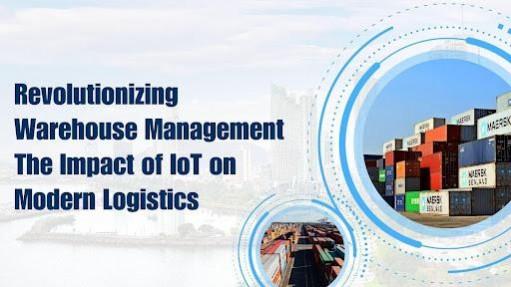Revolutionizing Warehouse Management: The Impact of IoT on Modern Logistics

In this digital era, Dinesh Kumar Garg, a renowned expert in industrial automation and logistics, examines the evolution of warehouse management systems through the integration of the Internet of Things (IoT). His research delves into how connected technologies are transforming efficiency, accuracy, and sustainability within the logistics sector. By leveraging IoT innovations, warehouses are becoming smarter, optimizing operations, and enhancing supply chain performance, ultimately redefining the future of logistics management.
The Shift from Conventional to Smart Warehouses
For decades, warehouse operations relied on manual processes and rudimentary tracking systems, often leading to inefficiencies, high operational costs, and errors in inventory management. The introduction of IoT has significantly altered this landscape. IoT-enabled systems now integrate real-time tracking, automation, and predictive analytics, reducing errors and enhancing warehouse productivity.
The Role of IoT in Real-Time Inventory Tracking
One of the most significant advantages of IoT in warehouse management is real-time inventory tracking. Advanced sensor networks, RFID tags, and cloud-based platforms enable warehouses to monitor stock levels with unparalleled accuracy. These systems can reduce inventory discrepancies to below 0.5% while ensuring that stock levels remain optimal, preventing overstocking and shortages.
Enhancing Operational Efficiency with Automation
IoT-driven automation is transforming warehouse operations by integrating autonomous guided vehicles (AGVs), robotic picking systems, and AI-powered analytics. These innovations help reduce labor costs by 30-40% while enhancing space utilization by 25-30%. By streamlining order fulfillment, IoT improves supply chain responsiveness, reduces delays, and drives overall operational efficiency, ensuring faster and more accurate inventory management.
Environmental Monitoring for Improved Storage Conditions
IoT-enabled environmental monitoring safeguards sensitive goods by maintaining optimal storage conditions. These systems provide real-time data, ensuring precise temperature control within ±0.5°C. By stabilizing warehouse climates, IoT reduces humidity fluctuations and minimizes product spoilage by up to 20%, enhancing efficiency and preserving inventory quality.
AI and Machine Learning in Predictive Maintenance
IoT integration goes beyond basic automation by incorporating artificial intelligence (AI) and machine learning algorithms. These technologies process millions of data points daily, enabling predictive maintenance schedules that reduce equipment downtime by up to 40%. This predictive capability not only extends the lifespan of warehouse equipment but also minimizes disruptions to operations.
The Future of Warehouse Connectivity with 5G
The deployment of 5G in warehouses is set to further enhance IoT capabilities. With data transmission speeds reaching up to 20 Gbps, real-time processing of inventory, environmental conditions, and operational workflows becomes seamless. This improvement supports applications such as augmented reality (AR) picking systems, which can increase picking accuracy by 40%.
Modern warehouse management prioritizes sustainability, integrating IoT-powered smart energy systems to optimize electricity usage and cut energy consumption by 30-40%. Smart lighting, automated HVAC controls, and renewable energy solutions enhance efficiency while reducing environmental impact. These innovations are transforming warehouses into eco-friendly operations without compromising productivity or performance.
Overcoming Implementation Challenges
Despite its advantages, the integration of IoT in warehouse management presents challenges such as high initial costs, data security concerns, and system compatibility issues. However, structured implementation strategies that prioritize ERP integration, workforce training, and phased adoption can mitigate these challenges, leading to successful deployments.
In conclusion, as IoT continues to advance, its influence on warehouse management is set to expand, reshaping logistics and supply chain efficiency. The integration of automation, real-time analytics, and sustainability-focused innovations is revolutionizing warehouses, transforming them into intelligent ecosystems capable of optimizing operations and enhancing productivity. By embracing these technological advancements, organizations can streamline inventory management, reduce operational costs, and improve overall efficiency. Dinesh Kumar Garg‘s research underscores the vast potential of IoT in driving operational excellence, cementing its role as the foundation of modern warehouse management.
